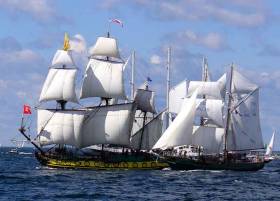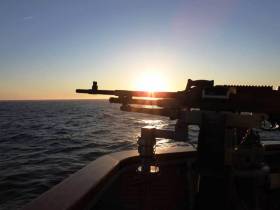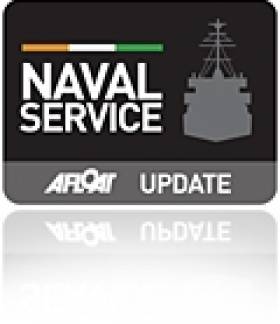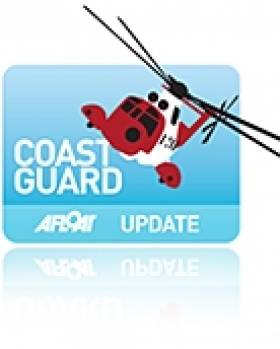Displaying items by tag: Department of Defence
WARNING TO THE PUBLIC DEFENCE FORCES (ARW) HELI SNIPING FIRING EXERCISE
On Wednesday 18th July 2018 from 09.00hrs to 16.00hrs
On Thursday 19th July 2018 from 13.00hrs to 23.30hrs
At GORMANSTON, CO. MEATH
IT IS DANGEROUS FOR PERSONS, SHIPPING, LIVESTOCK OR AIRCRAFT ETC., TO BE WITHIN THE DANGER AREA WHILE FIRING IS IN PROGRESS.
The DANGER AREA (EID1) comprises the lands of GORMANSTON CAMP and the air and sea area contained within a circle having a radius of 3NM
(5.4KM) centred on GORMANSTON CAMP with an additional area contained within the segment centred on GORMANSTON CAMP and bearing
015° T, through MOSNEY RAILWAY STATION and 106° T, through GORMANSTON RAILWAY STATION seaward for the distance of 10NM (18.5 KM)
The DANGER AREA extends from SEA LEVEL to a height of 10,000ft.
RED FLAGS will be flown at BEN HEAD and GORMANSTON RAILWAY STATION when exercises are taking place.
OBJECTS found on the RANGES may be HIGHLY DANGEROUS and the PUBLIC ARE WARNED of the risk of handling or interfering with such objects.
NO REWARD of any kind will be made for the finding of objects of a military nature on the ranges
SECRETARY GENERAL
DEPARTMENT OF DEFENCE
WARNING TO THE PUBLIC AIR CORPS FIRING EXERCISES AND AIR DEFENCE ARTILLERY FIRING EXERCISES
WARNING TO THE PUBLIC AIR CORPS FIRING EXERCISES AND AIR DEFENCE ARTILLERY FIRING EXERCISES
On Thursday 26th October 2017 From 10.00hrs to 17.00hrs AT GORMANSTON, CO. MEATH
IT IS DANGEROUS FOR PERSONS, SHIPPING, LIVESTOCK OR AIRCRAFT ETC., TO BE WITHIN THE DANGER AREA WHILE FIRING IS IN PROGRESS.
The DANGER AREA (EID1) comprises the lands of GORMANSTON CAMP and the air and sea area contained within a circle having a radius of 3NM (5.4KM) centred on GORMANSTON CAMP with an additional area contained within the segment centred on GORMANSTON CAMP and bearing 015° T,through MOSNEY RAILWAY STATION and 106° T, through GORMANSTON RAILWAY STATION seaward for the distance of 10NM (18.5 KM).
The DANGER AREA extends from SEA LEVEL to a height of 10,000ft.
RED FLAGS will be flown at BEN HEAD and GORMANSTON RAILWAY STATION when exercises are taking place.
OBJECTS found on the RANGES may be HIGHLY DANGEROUS and the PUBLIC ARE WARNED of the risk of handling or interfering with such objects.
NO REWARD of any kind will be made for the finding of objects of a military nature on the ranges.
SECRETARY GENERAL
DEPARTMENT OF DEFENCE
A New Tall Ship For Ireland? Would it Be Worth The Trouble?
As we move into March each year, throughout Ireland Tall Ships enthusiasts will wistfully recall that it was in March 1981 that Ireland finally commissioned her own Tall Ship, a national flagship worthy of our aspirations, the Jack Tyrrell-designed and Arklow-built 84ft brigantine Asgard II writes W M Nixon.
She gave years of excellent service and introduced young people from all backgrounds and every part of the country to the complete sail training experience at its very best. Yet although she was officially within the remit of the Department of Defence, in times of government expenditure cutbacks, the very existence of such an exotic creature in the amidst the workaday problems of running organisations with a military emphasis could be problematic.
Under a succession of talented and dedicated skippers with a small but devoted permanent crew, Asgard II was run in an efficient yet distinctly non-military, non-bureaucratic way. Even if at times it was done on a shoestring, it was all kept working, appearances were kept up with the vessel maintained by the crew, and the seemingly free-style system of command, while it had a core of disciplined pure steel at its heart, worked well to create a happy ship.
Nevertheless it could be argued that the unique and complex problems of running a small national sail training ship and her programme were about as far as could be from the instinctive abilities and traditional approach of the Irish Public Service mindset. But that said, the Irish public service has broad shoulders. There may not always have been total enthusiasm within it for having anything to do with running Asgard II. But it was always there in their In-tray, and they got on with it, with secretaries to Coiste an Asgard tending to give service way over and above the requirements of duty.
Yet being a Government-run ship, inevitably the viewpoint of whoever was Minister for Defence at the time affected the attitude to the Asgard programme. The realities of democracy intervened. At a national level, even in coastal constituencies, few if any votes were won or lost over whether the local TD vociferously supported the Asgard II sail-training programme. And if the current Minister for Defence happened to represent an inner-city constituency with little if anything in the way of deeply-engrained maritime traditions, Asgard II was way down the list of priorities.
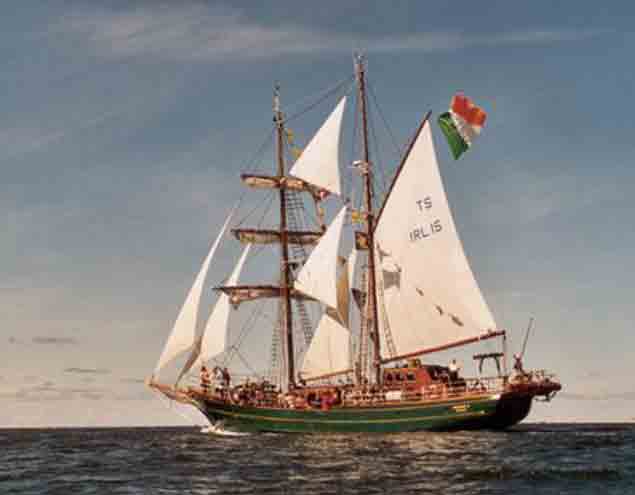 Thanks to devoted bos’uns and crew, Asgard II was always looking her best even when age was creeping up on her.
Thanks to devoted bos’uns and crew, Asgard II was always looking her best even when age was creeping up on her.
But she could be kept going – just - thanks to the ability of those running her to stretch resources to the limit and beyond. Yet with every passing season, the longterm problems were increasing. By the time she was sailing her 25th season in 2005, there were those who argued that a traditional wooden hull, with its single-skin planked construction, was no longer in compliance with increasingly complex regulations which required double-skin construction in a passenger-carrying boat, but Asgard II – with her limited number of trainees - was still able to pass regulations as a cargo-carrying vessel.
Then too, in the late noughties, Asgard was looking her very best with a devoted skipper and an extremely able bo’sun. But skilled painting, word-class varnishwork, and the necessary provision of a new and highly-visible set of immaculate spars, disguised the fact that if Coiste an Asgard had been given the funds to provide a replacement hull, the latest set of regulations would have insisted that it be double-skin. That in turn would have led to a raging public debate between those who would insist that Asgard III must be built in wood, and those who would reasonably point out that a double-skin wooden hull – with a safety gap between the skins as required by regulations – would be very space-consuming in a little ship which, even in her single-skin version, was already very crowded within her hull, and thus steel or even aluminium would provide the best way to go.
It all became very academic on September 8th 2008, when Asgard II sank off Belle Ile in the Bay of Biscay while on passage with a full crew of trainees from Falmouth in Cornwall towards the French port of La Rochelle. It started to happen shortly after midnight, and as she sailed along in reasonably pleasant late summer conditions, no-one on board had seemed aware of any impact with a submerged hazardous object, such as a container, which might have caused this sudden ingress of water.
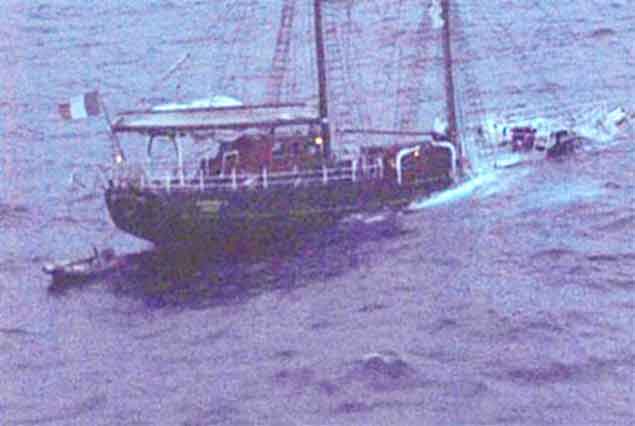 Monday, September 8th 2008
Monday, September 8th 2008
But it became such that the ship’s pumps couldn’t cope, and the captain’s first duty was to his trainees – it would have been irresponsible to spend precious time in the small hours of the morning calling up any ship which might happen to be in the neighbourhood, in the hope that she might have transferrable pumping systems which would have helped alleviate the problem.
The seamanlike thing was to declare the ship a hulk, and arrange her abandonment in an orderly manner. The only setback which arose in this action was the collapse of the floor in one of the large liferafts – a liferaft which had only recently been re-certified – but the people on it were transferred to other liferafts, and in due course the local lifeboat arrived and took everyone to Belle Ile while Asgard sank with a certain quiet dignity, and took up a position sitting on the seabed in 84 metres of water.
There were immediate calls for her salvaging as soon as possible, to be followed by full restoration and a resumption of sail training duties. But the senior officer of the Naval Service involved in the issue put it all in a harsh but necessary perspective: “Would you like your children to go to sea as trainees in a ship which has sunk in this way” he quietly asked, “when, however good the restoration, it is still the restoration of a vessel which inexplicably sank like this?”.
For however much you try to read into the official report, its results are not totally conclusive, and the reality is that the Asgard II sank, and sank quite quickly, after an impact of which no-one was aware. It’s very likely the sinking would not have happened had she been double-skinned. But any attempts to make a raised and restored Asgard II into a double-skinned vessel would have been an absurd waste and misdirection of resources.
Be that as it may, by this time, the Irish economy was in complete free-fall off a very high and steep economic cliff, and although the loss of the Asgard II was assuaged eventually by an insurance payout of €3.8 million, it was only within the sail training community that anyone protested against the transfer of these funds to the Department of Finance at a time when the national economy was on its knees with the Troika bail-out.
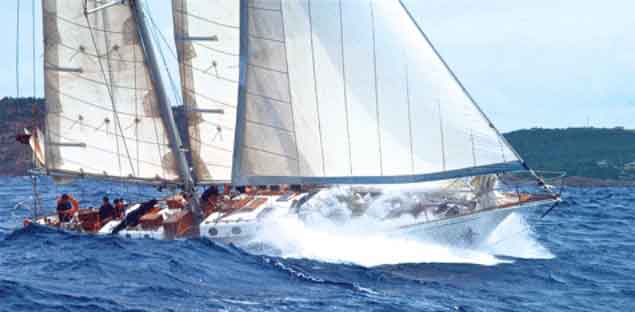 Spirit of Oysterhaven is licensed to carry 12 trainees
Spirit of Oysterhaven is licensed to carry 12 trainees
In fact, the Government – for the time being at any rate – was quietly exiting the sail training arena, and in 2011 all the remaining assets and functions of Coiste an Asgard were transferred to a new non-Governmental organisation, Sail Training Ireland, which set to work to find berths for Irish trainees on other ships in an international network which, partly thanks to the very favourable reputation which Asgard II had established for herself during her 28 busy years, has been working well as they’ve also brought in “private enterprise” training ships such as Oliver Hart’s yacht-like 70ft schooner Spirit of Oysterhaven, which has been awarded the Sail Training International Small Vessel Award for 2016, a really notable achievement in a crowded field.
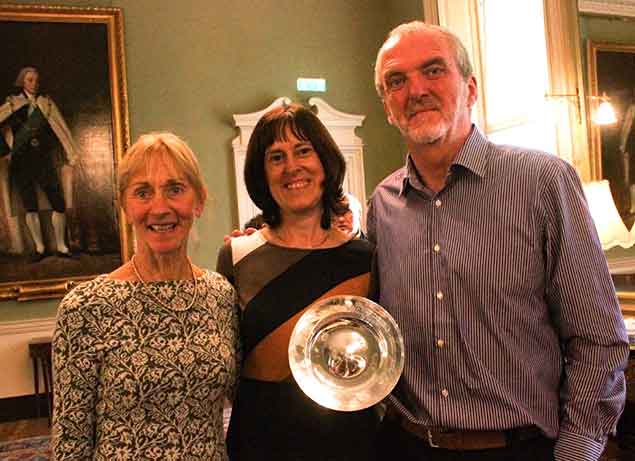 Kate Hart, Sinead Hurley and Gary Davis of Spirit of Oysterhaven. Winner of Sail Training International Small Vessel Award for 2016.
Kate Hart, Sinead Hurley and Gary Davis of Spirit of Oysterhaven. Winner of Sail Training International Small Vessel Award for 2016.
 While sail training should be mainly about sailing, from time to time the vessels involved have to manoeuvre under power in very small harbours. Spirit of Oyserhaven’s lines are of special interest, as they reveal the designer has retained a straight leading edge on the rudder, thereby optimising the control benefit of propeller thrust even though the propeller is in an aperture in the long-keel hull.
While sail training should be mainly about sailing, from time to time the vessels involved have to manoeuvre under power in very small harbours. Spirit of Oyserhaven’s lines are of special interest, as they reveal the designer has retained a straight leading edge on the rudder, thereby optimising the control benefit of propeller thrust even though the propeller is in an aperture in the long-keel hull.
But inevitably a couple of years after the loss of Asgard, when her complete demise was finally accepted, voices were being raised in support of returning some day to the position of Ireland having her own sail training ship. It has to be said that these were for many years just a few voices crying in a wilderness, for in the near decade since Asgard II sank, Ireland has been a complete disaster area for tall ships and sail training vessels.
The litany of disaster is unbelievable. The only redeeming feature is that in a great tapestry of sinkings and groundings and the striking of rocks, not one life has been lost. But many dreams and careers have been utterly destroyed.
Appropriately, we’d had a rehearsal on RTE way back in 2003, when the traditional gaff schooner Carrie involved in the reality TV series Cabin Fever managed to come ashore on Tory Island, and soon broke up for the delectation of millions of viewers worldwide, with the whole sorry episode being on a loop on the screen in many a harbourside bar.
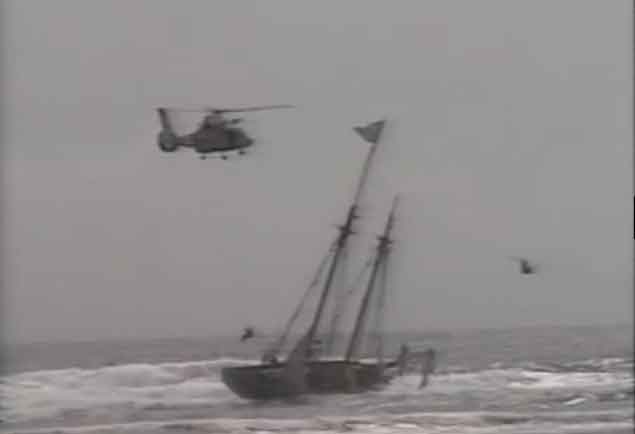 A video grab from RTE News of the Cabin Fever Ship aground
A video grab from RTE News of the Cabin Fever Ship aground
Then, even before the Asgard II story had been laid to rest, in 2010 the Northern Ireland Sail Training ship, the 80ft Oyster ketch Lord Rank, managed to impale herself on a rock northwest of Ballycastle in Rathlin Sound on the Antrim coast. Once again the incident got even more publicity than would have normally been expected, as they had a team from Downtown Radio on board to transmit a broadcast.
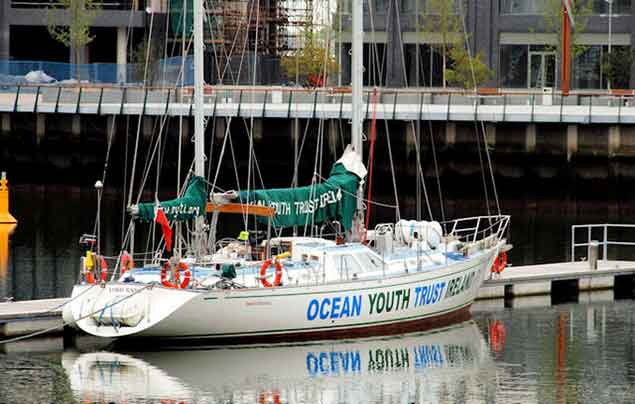 The Northern Ireland 80ft ketch Lord Rank sank within two years of Asgard II going down
The Northern Ireland 80ft ketch Lord Rank sank within two years of Asgard II going down
But a Bermudan rigged ketch on an isolated rock doesn’t make for nearly as spectacular a wreck as a proper Tall Ship destroying herself in against a cliff, and this epic was provided in 2013 when it was demonstrated that the road to hell is paved with good intentions.
Ireland was barely getting her nose above water after the bail-out, and in order to get things moving again on the tourism front – for who would want to be a tourist in a country in the depths of economic and psychological depression? – the Department for Tourism set up 2013 to be the Year of the Gathering, when people of Irish descent worldwide would be encouraged to return home for holidays in the Old Sod, the land of their ancestors.
Whether it was a bright idea or not is neither here nor there, as funds were lapped-up in order to pay for “Gatherings” such as family weddings. But the fact is that generally it was announced with little enough time to spare for anyone, other than those catering for people who make last-minute short-break holiday decisions, to make proper plans. Thus with only months to go, the Irish Sailing Association co-opted the Cruising Association of Ireland to put together a Gathering Cruise for visitors from Dublin Bay to West Cork, and while it attracted a turnout, the mood became more optimistic as they proceeded along the south coast, as it was learned that at Oysterhaven the little fleet would be joined by the 137ft Dutch Tall Ship Astrid, which at a stroke would maybe double the number of people taking part.
But the Irish weather and the fates in general would not let you get away with such a serendipitous turn of events. Following the Oysterhaven meet, the fleet were to parade round to Kinsale. But it was a dirty day of an onshore wind, and the old Astrid would need the help of her small auxiliary engine if she was going to make a suitably impressive entrance to Kinsale close by the cliffs.
Unfortunately, at a port of call earlier in her voyage from the Netherlands, Astrid had mistakenly had some fresh water put into her diesel tank. Though every effort had been made to remove it, the fuel was still contaminated and the engine cut out at the absolute crucial moment of rounding the headland immediately east of Kinsale.
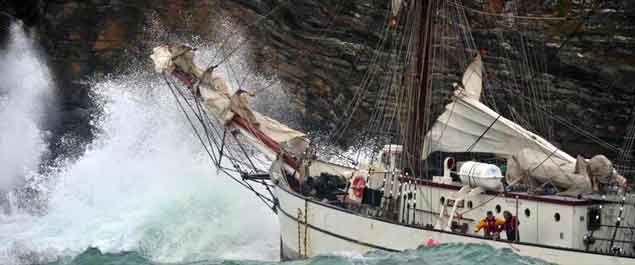 Death in slow motion. Astrid onto the cliffs outside Kinsale
Death in slow motion. Astrid onto the cliffs outside Kinsale
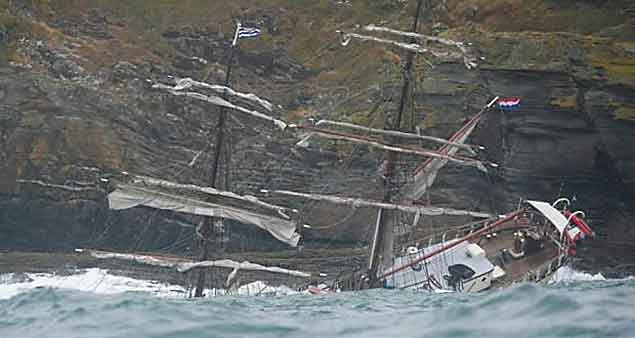 All hope gone. Astrid’s death throes.
All hope gone. Astrid’s death throes.
Unlike the Asgard II’s graceful departure, poor old Astrid had a long and lingering death in against those cliffs. It was a salutary lesson for everyone, for until then we’d tended to look to the Dutch as the very exemplars of a properly-run, indeed closely-regulated maritime nation. Yet it emerged that neither Astrid nor some of those involved in running her were properly certified to be taking trainees to sea.
We’re always told that we in Ireland are too lax in implementing European maritime law, working on the old Chinese saying that the mountains are very high, and the Emperor is far away. Admittedly, apart from Snowdonia in Wales, there are no mountains between Ireland and Brussels. But even so, things seem to be the other way round in any case – the nearer you get to the entre of power, the more relaxed is the observation of “petty” regulations.
In 2013 I’d already seen a demonstration of this when a large Dutch contingent arrived in Dublin as part of the Old Gaffers Association Golden Jubilee Cruise in Company. When we were in Dublin port, up the river came a Dutch character boat captain and his little dog in their tiny dinghy, and a classic Seagull outboard on the stern spluttering all sorts of pollution at a time when everyone else in Europe seemed obsessed with the compliance of regulations about changing to much heavier pollution-reducing four strokes, or making the big move to electric outboards.
 One man and his dog. In 2013, a Dutch Old Gaffer cruising the Liffey had scant regard for Directives from Brussels about doing away with old polluting outboards. But at least they were wearing lifejackets…..Photo: W M Nixon
One man and his dog. In 2013, a Dutch Old Gaffer cruising the Liffey had scant regard for Directives from Brussels about doing away with old polluting outboards. But at least they were wearing lifejackets…..Photo: W M Nixon
So all is not as it seems at the heart of Europe. And after the Astrid disaster those who might have though of using the highly-regarded Dutch marine industry as the source of a new vessel had to undertake further research until they were once again certain it was still the right thing to do.
But equally, after the loss of the Carrie, the Asgard II, the Lord Rank, and the Astrid, and after it had emerged that it was simply too costly to keep the Jeannie Johnston in Dublin and the Dunbrody in New Ross in certified condition as seagoing tall ships, instead of just using them as permanently-berthed visitor attractions, there inevitably has emerged a quiet but real body of opinion which reckons that Ireland having the luxury her own sail training tall ship simply isn’t worth the hassle.
 The Dutch ship Morgenster. Should we continue to send her a regular supply of trainees to save ourselves the trouble of running our own tall ship?
The Dutch ship Morgenster. Should we continue to send her a regular supply of trainees to save ourselves the trouble of running our own tall ship?
After all, Sail Training Ireland – now with Darragh Sheridan as CEO after Michael Byrne has moved on to fresh fields after several successful years – is running very smoothly in placing trainees in other European ships, with the Dutch vessel Morgenster in particular proving so popular that she is now almost honorary Irish.
As the STI programme has developed, well-wishers and organisations such as the Irish Cruising Club are finding it an attractive propositions to provide bursaries for young people to go to sea in a proper international tall ships situation through the STI’s current setup. It’s neat, tidy and manageable. And when winter comes, it’s not our concern whether or not the Morgenstern, and other ships that we in Ireland use, such as the splendid Europa, have to undergo a major refit or instead get themselves out to the Canaries for a profitable winter programme.
Thus as ever it was heartening to attend STI’s annual awards ceremony in Dublin’s Mansion House, and share the enthusiasm of an enormous diversity of young people each of whom had responded in their own favourable way to the Tall Ships experience.
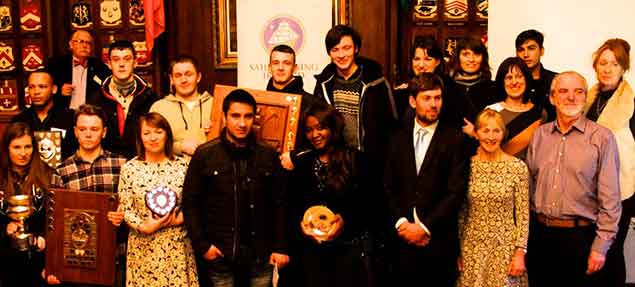 All the award winners at this year’s Sail Training Ireland ceremony in the Mansion House.
All the award winners at this year’s Sail Training Ireland ceremony in the Mansion House.
 Presentation of the Cork Life Centre-Asgard Award with (left to right) Sara Mason & Daragh Sheridan of STI, MC Marcus Connaughton, Commodore Hugh Tully, Flag Officer Commanding Naval Service, and Dublin City Councillor Ruairi McGinley presenting the award to Stuart Barry, Danny O’Keeffe, William Cooper, and Colm O’Brien
Presentation of the Cork Life Centre-Asgard Award with (left to right) Sara Mason & Daragh Sheridan of STI, MC Marcus Connaughton, Commodore Hugh Tully, Flag Officer Commanding Naval Service, and Dublin City Councillor Ruairi McGinley presenting the award to Stuart Barry, Danny O’Keeffe, William Cooper, and Colm O’Brien
 Nathan Howard (left) representing Tim Baker of Belfast, the awardee for Outstanding Achievement, with Seamus McLaughlin, Chairman of Sail Training Ireland
Nathan Howard (left) representing Tim Baker of Belfast, the awardee for Outstanding Achievement, with Seamus McLaughlin, Chairman of Sail Training Ireland The STI Outstanding Contribution award goes to Victor Springbok (right) with (left to right) Sara Mason & Daragh Sheridan of STI, Commodore Hugh Tully and Cllr Ruairi McGinley
The STI Outstanding Contribution award goes to Victor Springbok (right) with (left to right) Sara Mason & Daragh Sheridan of STI, Commodore Hugh Tully and Cllr Ruairi McGinley
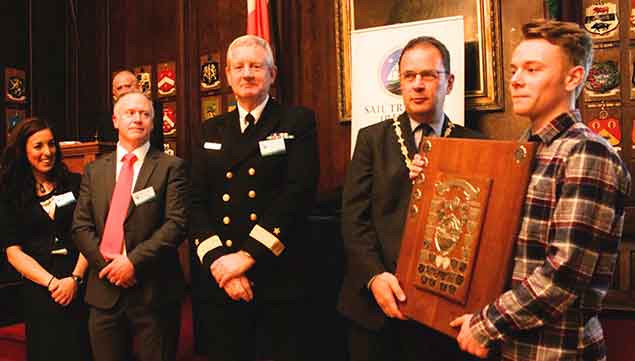 STI Trainee of the Year Ross Moore (right) with (left to right) Sara Mason, Daragh Sheridan, Commodore Hugh Tully, and Cllr Ruairi McGinley.
STI Trainee of the Year Ross Moore (right) with (left to right) Sara Mason, Daragh Sheridan, Commodore Hugh Tully, and Cllr Ruairi McGinley.
But then you couldn’t help but notice that in the Mansion House a popular guest, to whom everyone seemed to relate, was Neil O’Hagan, of the Enda O’Coineen-inspired Irish Atlantic Youth Trust. Their purpose is the creation of an all-island Irish Sail Training Ship, a 140ft three-masted barquentine based on the proven Spirit of New Zealand, and built in steel in the Netherlands by reputable designers and builders, while keeping open the option of having her builders provide a kit which can then be assembled here to become a ship built in Ireland.
To work, the project would need a considerable level of Governmental input and in Ireland’s always fluid yet somehow also rigid political situation, that is the Great Unknown. The Atlantic Youth Trust has offices in Dublin and Belfast to deal directly with Government even if the island’s real maritime capital is Cork, but resolving that will be another day’s work.
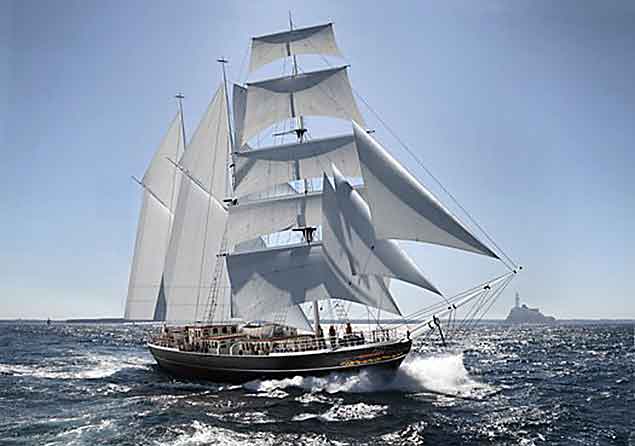 The vision. Concept image for the barquentine-rigged 40-metre Tall Ship proposed by the Atlantic Youth Trust
The vision. Concept image for the barquentine-rigged 40-metre Tall Ship proposed by the Atlantic Youth Trust
As it is, thanks to the influence of leaders such as Chairman Lord Glentoran, the Atlantic Youth Trust arranged a meeting with Peter Robinson MLA, the then First Minister of Northern Ireland. A Tall Ships gathering was shaping up in Belfast (when it happened, it was a notable success) so the mood was good for the delegation, and the First Minister warmly received the idea of a concept which would inevitably involve Government capital expenditure.
And then he made one request. He asked them to go along the corridor and put the idea to Deputy First Minister Martin McGuinness MLA, as that was the way shared power was meant to work. So along they went in some trepidation, and after the usual introductory pleasantries, they outlined the situation and were almost bowled over by Martin McGuinness’s enthusiasm.
Eventually, when they were taking their leave, they asked him why he had leapt at the idea so keenly. He replied that apart from it being a very good idea, it was maybe the first clearcut occasion on which the First Minister had received a proposal, and then without the usually inevitable closeting with his special advisors, had immediately given it a fair wind along to the Deputy Minister. It was how power-sharing was meant to work, but very rarely did.
It was a good start, but there was still a long way to go, for in tandem with their negotiations in the north they had to bring the Dublin government in as an equal partner. Here, the overall response was favourable but the complexities – involving a different structure of Government departments, not to mention all the movements in political mood - made it long hard going.
Meanwhile, there was a by-product which bears out the effect they’d had in the corridors of power in Stormont. Our northern correspondent Betty Armsrong was in Derry for the visit of the Clipper Fleet, in which the city had an entry, and came back enthusing about her new VBF Martin. It turned that while in the Maiden City, she’d spent some time in the company of Martin McGuinness whose enthusiasm for the entire waterborne pageant was total. “Admittedly” said he “the cost of supporting the boat and getting the visit seemed very high when we were being talked into this, but now that it is happening so well, it’s worth every penny”.
It would be ironic if the successful visit of the Atlantic Youth Trust to the office of the Deputy First Minister is in the end only recalled for the fact that Martin McGuinness was an increasingly enthusiastic supporter of major maritime events and projects. But the reality in Government is that the political personnel landscape is now entirely changed both north and south, and we’ll need the dust to settle before we can see where it’s all going.
Yet even as recently as November, Neil O’Hagan reckoned things were looking good, and he’s convinced they’ll come good again in due course. Back in November, despite the turbulence of Brexit, he was getting various government departments north and south and the STI and other bodies nicely lined up for a series of test programmes using the Morgenstern, and then anticipated building on that. A plateau of achievement had been reached, and former Olympic Gold Medallist Lord Glentoran, a visionary chairman but now well into his eighties, felt the time was right to step down and be replaced by noted businessman and experienced sailor Peter Cooke.
 Atlantic Youth Trust in Belfast with (left to right) Neil O’Hagan, Lord Mayor of Belfast Brian Kingston, incoming AYT chairman Peter Cooke, President Enda O’Coineen, and outgoing chairman Lord Glentoran.
Atlantic Youth Trust in Belfast with (left to right) Neil O’Hagan, Lord Mayor of Belfast Brian Kingston, incoming AYT chairman Peter Cooke, President Enda O’Coineen, and outgoing chairman Lord Glentoran.
But since November, other things have happened. The collapse of the Stormont administration and the General Election last Thursday will have its effect. So will the possible changes of leadership south of the border. And while Enda O Coineen now has a largely honorary role in the Atlantic Youth Trust as President, public perception is so febrile that we can only guess at the effects – favourable or otherwise – his major setbacks and his courageous handling of them in the Vendee Globe race will have on the way people view the Atlantic Youth Trust.
Thus for the moment there’s a distinct vacuum where positive progress towards a joint-government-underwritten sail training ship for all Ireland might normally be found, and all too quickly, vacuums being what they are, all sorts of alternative solutions may be offered.
The trouble is that, when faced with a big traditional sailing ship and better still a square rigger - any square rigger, and preferably one with a magnificent clipper bow – people will lose the run of themselves in dreams. Dreams of sailing the seas as the great mariners of yore did before them. Dreams of introducing young people to the wonders of sail. Dreams of saving the planet through the healing effects of majestic rigs driving non-polluting tall ships cross the ocean.
Such dreams are getting thing entirely the wrong way round. Certainly you may be inspired by seeing a ship like the Europa making her handsome way down Befast Lough under full sail. But having seen her, that’s when the research work should start, the hard work behind the scenes to make it all a realistic proposition, and start working towards sustainable funding.
Yet it so easy to see the ship and get inspired and immediately involved without a thought for what it will cost in the long run. That’s probably how the elderly owner of the Astrid was drawn into the dreadful mesh. And in the north, they’ve two character ship ventures whose owners dream the dream, but whether either can ever become reality is another matter entirely.
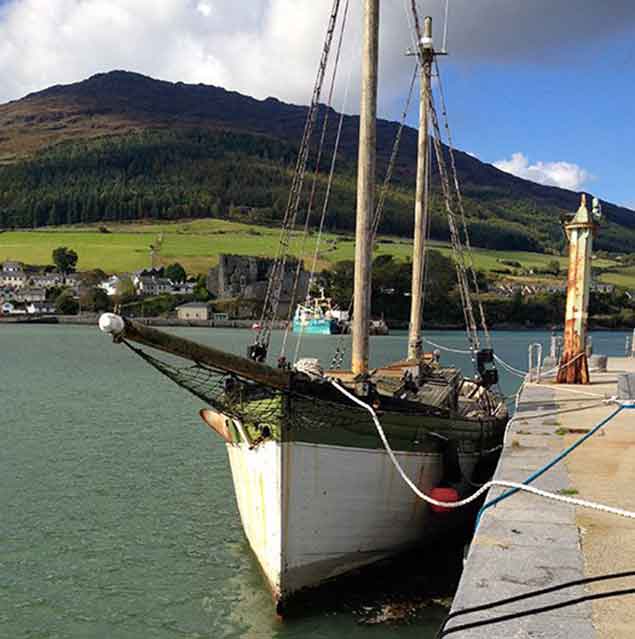 Dreamship? The characterful Silvery Light at Carlingford
Dreamship? The characterful Silvery Light at Carlingford
There’s a vessel called the Silvery Light in Newry, and she inspired those who saw her when she first arrived in Ireland alongside the quay in Carlingford. But now the owner seeks support from whatever source to make her fit to be a sail training vessel – we can only wait and see, for we have some idea of what a monumental task this is.
But in the little village of Portaferry, a tall ship dream has turned into disaster. We’ve carried stories of the sunken 130ft Regina Caelis on Afloat.ie in recent weeks, but things get no better.
Apparently she is owned by someone who bought her from a previous owner for just £1.The previous owner from Northern Ireland had bought her in Scotland, hoping to turn her into a tall ships dream to sail in warmer seas. But by the time he’d got her home to County Down, he realised it was beyond his ability to complete the work, so after he’d managed with great difficulty to get her berthed on the end of the little public quay at the south end of Portaferry, she was offered for sale for the nominal sum.
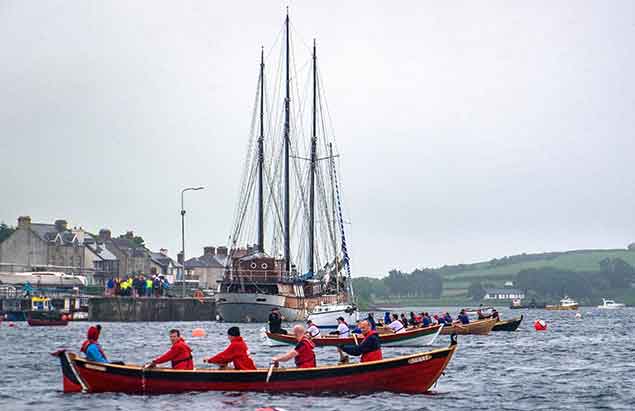 The elephant in the room, The 130ft Regina Caelis overstayed her welcome by many months when she effectively blocked off Cook Street Quay in Portaferry, making it difficult of access for the race officers in one of the local skiffie events, and unusable by any other boats…….Photo: Gary Lyons
The elephant in the room, The 130ft Regina Caelis overstayed her welcome by many months when she effectively blocked off Cook Street Quay in Portaferry, making it difficult of access for the race officers in one of the local skiffie events, and unusable by any other boats…….Photo: Gary Lyons
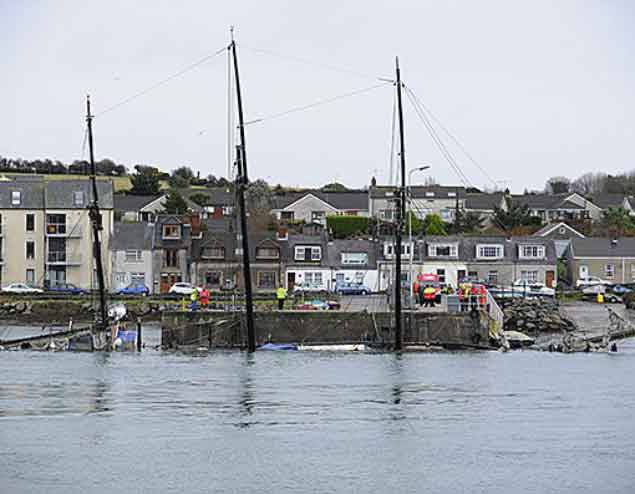 …….and then she went and sank, polluting Strangford Lough with 900 litres of diesel
…….and then she went and sank, polluting Strangford Lough with 900 litres of diesel
That was more than a year ago. Since then she has changed ownership for £1, but she continued to completely block off what should be an important local amenity, as Cook Street Quay – to give it its local name – traditionally provides free berthing, but its successful functioning depends on no-one abusing this valuable privilege.
Whatever about the good intentions when this ship the Regina Caelis arrived at the quay, berthed on it she is so out of scale that her bow sticks out at one end and her stern sticks out at the other, thereby impeding boat access to either side of a public pier. Staying there for more than a year soon became a matter of abusing a communal facility. But then it all became completely pear-shaped when she sank at the pier, gradually leaching 900 litres of diesel fuel into Strangford Lough, a very special nature reserve.
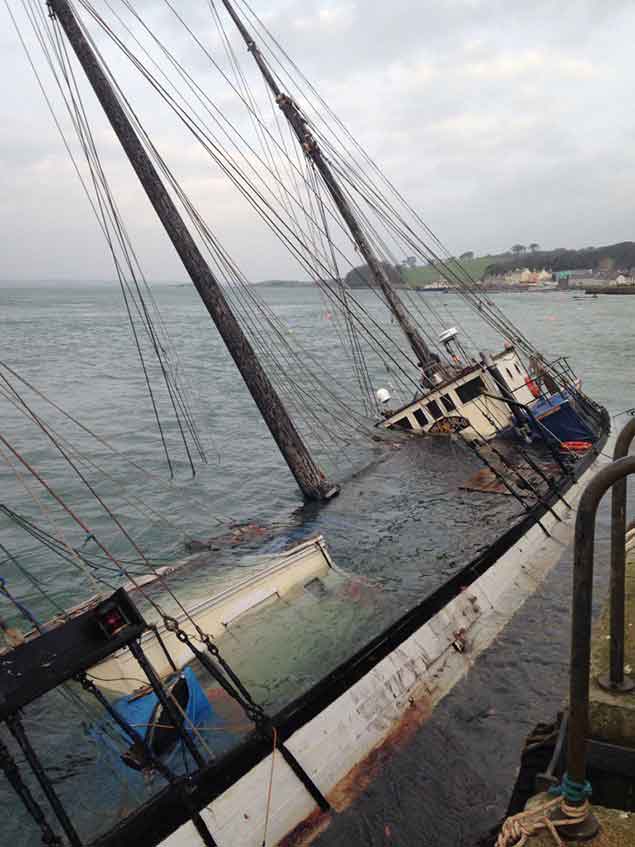 It would provide a perfect course in salvage techniques at some maritime university, but Portaferry could do without it
It would provide a perfect course in salvage techniques at some maritime university, but Portaferry could do without it
It’s now an environmental and neighbourhood disaster beyond belief. But with a free pier and in the absence of an active government, the position has been allowed to persist, while the optimistic owner has launched a crowd-funding initiative in order to raise his vessel and restore her to her full potential as a tall ship.
Seasoned observers reckon that it will indeed be a crowd-funding initiative which will solve the acute problem of the Regina Caelis slowly disintegrating at Cook Street Quay in Portaferry. But the crowd will be the much-put-upon taxpayers of Northern Ireland, and they’ll be in this crowd-funding project whether they want to or not.
Whatever the outcome, it’s all a very long way indeed from a properly researched and resourced sail training barquentine for the young people of all Ireland. And in its veiled hostility, it’s all an extremely long way away from the friendly efficiency of the annual Portaferry Sails and Sound music and traditional boat festival, which shows Portaferry at its best. In every way, it’s an excruciatingly unpleasant situation for a charming village. Portaferry deserves better.
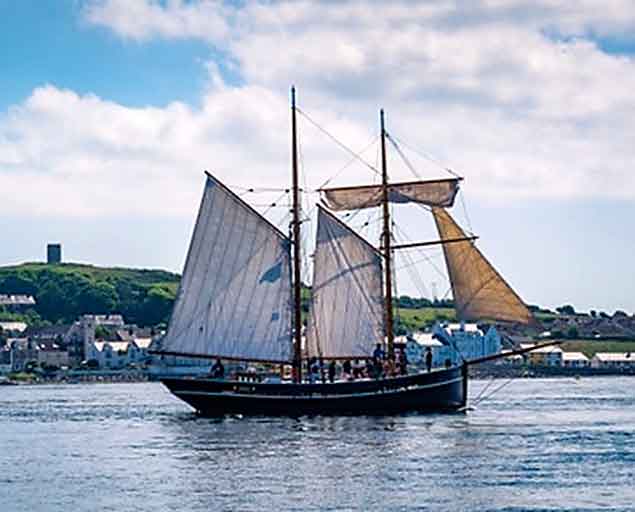 Portaferry in happier times, with Scott & Ruth Metcalf’s schooner Vilma off the town Photo: Neil Ritchie
Portaferry in happier times, with Scott & Ruth Metcalf’s schooner Vilma off the town Photo: Neil Ritchie
Why Has No Politician Expressed Concern In The Dáil About The 'Strategic Implications' Threatening The Naval Service?
Why has no politician of any hue, Government or Opposition, of any party or of the Independents, raised concern in the Dáil about the strategic implications for the State of the threat to a fully operational Naval Service and its joint operations with the Air Corps? Scroll down to listen to the podcast below.
Why has no one questioned the Taoiseach who, in the formation of the new Government, took to his own responsibility the Department of Defence, about these issues? The Department has stated, clearly and unambiguously, in public that Naval and Air Corps joint operations, including those directed towards marine counter-terrorism, replenishment of Naval vessels at sea and other operations, are under threat.
The Haulbowline Naval Base is “an important strategic location for the Irish Defence Forces..”
“It is the only Naval Service base in Ireland..” The threat to it “cannot be an acceptable situation for the necessary functioning of a fully operational Naval Base.”
Those are not my opinions. They are those of the Department of Defence.
And yet, they do not seem to worry the members of our National Parliament.
Not a mention in the Dáil, the assembly of the duly-elected representative of the people, no concern expressed about the “strategic implications” for the country’s Navy and Air Corps.
Either the politicians have no interest in the defence of the nation or they care little about the maritime defence force and its joint operations with the Air Corps.
I live in Cork Harbour and when I look out my kitchen window I see three wind turbines powering chemical factories close by and I can see the operations of several of these plants every day from my home, so I am well used to the heavy industrialisation of the harbour. However, this is an issue of the operations of the Navy and Air Corps, identified by the Department of Defence as having "strategic implications for the State" and which, as the Department has said, makes it a nationalo, not a local issue.
This week on THIS ISLAND NATION radio programme which you should listen to here, the Managing Director of the commercial company which is posing those identified threats to the Naval Service and Air Corps, tells me that the Services should “compromise” with the operations of his company, which will co-operate with them.
In my long years of journalism, half-a-century at this stage, I have never before heard any company suggest that the nation’s defence forces should have to compromise with a commercial operation, which is not a benign, beneficent public service but an international operation with a profit motive. I had presumed that the Defence Forces are vital to the structure of a democratic nation and should be considered above such pressure from commercial interests.
John Ahern, Managing Director of Indaver Ireland, whose incinerator proposed for Ringaskiddy, close to the Naval Base, has been described by the Department of Defence as posing those unacceptable strategic implications for the Navy and Air Corps, agreed to be interviewed by me on this specific issue. He had extended the invitation to interview him. In the course of it he expressed respect for the Navy, but told me that the State, in regard to his company’s proposals, had two tasks – management of waste and operation of the Naval Service. I expressed surprise that he equated the two and reminded him that, during an accident causing explosion and fire at the Indaver plant at Antwerp Port earlier this year, all those in the vicinity were told to “stay indoors.” Was he suggesting that the Navy would have to “stay indoors” in the event of an accident at his plant? There is only one road servicing the Naval Base on Haulbowline, which the proposed incinerator would be built alongside. He accepted that there is no guarantee against accidents, even though his company theoretically maintains that there would be none which would impact on the Navy and he indicated that it would be a matter for the Naval Service to decide its response if there was an accident. He said his company had suggested an alternative escape route through nearby premises of the National Maritime College/IMERC, though he also said that people in that area, just across the road from the proposed incinerator site, might have to be told to “stay indoors” in the event of an accident.
We did not agree, as I believe that the Naval Service should be of priority importance to the nation and its operations should not be subject to any threat from commercial interests and that there should be no strategic implications for it and the Air Corps, which has said that incinerator operations will cause a ‘no fly zone’ to be imposed over the Naval Base.
I was overly concerned with Naval Service operations, in his view.
I do not agree.
Mr. Ahern appeared confident of gaining approval from Bord Pleanala, the national planning board, to proceed with the incinerator construction after a public hearing which has concluded and a decision is awaited.
Can it be that this Board, unaccountable to anyone, now has the power to decide on future Naval Service and Air Corps operations?
Can this be acceptable in an independent nation, that a planning board and not the Government, should have the power to decide on the future operations of Defence Forces?
Also on the programme, the President of the Nautical Institute, the world representative organisation for professional seafarers, says that Ireland needs a strong maritime voice. I agree with this view expressed by Captain Robert McCabe
Regrettably, it seems that a strong voice of concern about the “strategic implications” for the “fully operational” maritime defence force, the Naval Service and it Air Corps operational partners, is not present in Dáil Eireann.
Listen to the podcast below.
Ireland Could Join Effort to Battle Somali Pirates
#NAVAL SERVICE - Ireland could soon join the fight against Somali pirates in the Indian Ocean, the Irish Independent reports.
Minister of State Fergus O'Dowd confirmed that the Department of Defence was considering sending a personnel detachment to assist the EU's naval mission in the area west of Africa.
The region has been blighted by pirate attacks on merchant vessels and pleasure cruisers for a number of years.
Most recently, as reported on Afloat.ie, the situation prompted an interruption to the Volvo Ocean Race - with the six yachts shipped on a secret route to the United Arab Emirates under armed guard.
Ireland's potential contribution to the EU's Operation Atalanta is known as an autonomous vessel protection detachment (AVPD), and would be used to protect the likes of food aid ships from the World Food Programme that sail without a naval escort.
The Irish Independent has more on the story HERE.
Programme for Government will Reinstate Marine Department
It maybe the second last item on the programme for government issued by Enda Kenny and Eamon Gilmore yesterday but the indications are good that the marine sector will see a reinstated Department of the Marine. the Fine Gael and Labour coalition say 'marine responsibilities will be merged under one Department, for better co-ordination in policy delivery'. Here is the relevant excerpt:
Coastal communities, fisheries & marine environment
We will negotiate the best possible deal for fishermen in the review of the Common Fisheries Policy.
We will support the development of sustainable aquaculture and fish farms by streamlining the licensing process and reducing associated bureaucracy.
Marine responsibilities will be merged under one Department, for better co-ordination in policy delivery. We will develop an integrated marine and coastal planning process in order to maximise the potential of Ireland's coastline in fishing, aquaculture, ocean energy and tourism.
A Sea Fisheries Sustainability Impact Assessment, based on consultation with all major stakeholders, will be brought before the Dáil annually before EU fisheries negotiations commence.
We will replace criminal sanctions system for minor fisheries offences with administrative sanction system to bring Ireland into line with other European jurisdictions. Safety at sea and decent working conditions must underpin the development of the fisheries sector. We will explore the provision of an emergency towing vessel for the Coastguard.
Coast Guard Hits Out Over Search & Rescue Deal Reports
The Irish Coast Guard (IRCG) has lashed out over newspaper articles on the recent €500m deal with CHC Ireland to provide search and rescue services.
The it was recently reported in an Irish newspaper that Fine Gael TD Fergus O'Dowd called for an investigation into the deal. This followed a previous article in the same publication which claimed proposals by the Air Corps to provide the same service at a lower rate were rejected on the grounds that its main helicopter did not have a "good reputation".
But IRCG director Chris Reynolds has hit out at the newspaper for ignoring its clarifications over the CHC Ireland contract.
In correspondence seen by Afloat.ie, Reynolds answered questions from the paper regarding the nature of the deal.
Among them he explained that the invitation to tender was publicly advertised and open, but that the then Minister of Defence had made a policy decision in 2004 to remove the Air Corps from search and rescue services due to "operational difficulties" and precluded them as an option.
Reynolds emphasised that it was a Department of Defence directive that the deal be "100% civilian".
He also disputed any link between the CHC Ireland deal and one made by its parent company in the UK, which has been called into question over perceived irregularities.
Meanwhile, Afloat.ie has seen correspondence from CHC Ireland to former Minister for Transport Pat Carey assuring that the cancelling of the UK deal has no bearing on the provision of its services to the Irish Coast Guard.




























